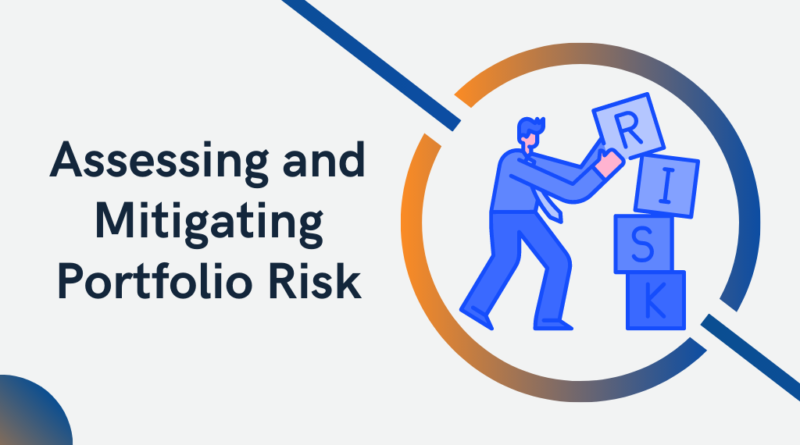Assessing and Mitigating the Portfolio Risk
Risk is an integral part of every investment. The financial market is blended with risk. In simple terms, risk can be defined as the probability of something bad happening. While in investment terms, it refers to the deviation from expected earning or the potential financial loss inherent in an investment decision. Risk has directly impacted the profitability of many giant firms. The issue of investment risk management has gained immense importance after several financial crises and stock market crashes.
Portfolio risk is one of the most important challenges for any investor. Higher risk-taking portfolios can lead us to higher profits and rewards in less time while low-risk profile portfolios tend to provide low returns over a larger period of time. But the higher risk-taking portfolios can lose all your wealth or gains instantly if the market turns volatile. Stable and steady portfolios can protect your wealth in any such situation. In stable and steady portfolios, however, the rate of return is very slow, which means that your financial goals will not be met. With the recent market fluctuations, managing risk is more important than ever for any investor. With the right strategies, you can get it right.
Assessing the Types of Risk
The first step involves in risk assessment is to understand the type of risk.
The risk can be broadly categorized into 3 types:
Asset Risk
Asset Risk can be defined as the risk involved with the market changes or poor investment performance of a financial asset. The financial asset can be stocks, bonds, currency, etc.
Systematic Risk
Systematic risk is a type of risk that affects the overall market. It is also known as market risk or undiversifiable risk. This risk is uncontrollable for any specific company or individual. It is caused by factors that are external to the organization like inflation, any legal changes, an increase in the interest rates, etc.
Portfolio Risk
Portfolio risk is the risk existing in your own portfolio. It refers to the possibility that the combination of assets within your investment failed to fulfill your financial objective. Portfolio risks can be calculated, like calculating the risk of single investments, by taking the standard deviation of the variance of actual returns of the portfolio over time. This variability of returns is commensurate with the portfolio’s risk, and this risk can be quantified by calculating the standard deviation of this variability.
Mitigating Portfolio Risk
The most important way to mitigate the portfolio risk is to invest wisely within each asset class. This is called Portfolio diversification. It refers to the do investments within each asset class to help reduce investment risk. A well-diversified portfolio helps in reducing the impact of major market swings on your portfolio.
How does Portfolio Diversification work?
Consider the example of the cricket team. It consists of 11 players that have different talents and abilities. Some can bat well; others can bowl well while some are good fielders. Suppose if your two or three batsmen fail to score, then there are other batsmen in the team on whom the team can depend upon. Similarly, if one or two bowlers are giving too many runs, then other bowlers are always there in the team that can provide you good wickets and can balance the game.
So, this means that the team does not depend on only one or two players, the contribution of each player is necessary to counter the bad performance with effective performance
Similarly, this happens in the case of portfolio diversification also
If you invest in the stock of just one company, then you are taking a greater risk as if that company fails to perform, then you will lose all your gains instantly.
But if you instead buy stocks in 15 or 20 companies in several different industries, you can reduce the potential for a substantial loss. If the return on one investment is falling, the return on another may be rising, which may help offset the poor performer.
How can Portfolio Risk Assessment tools help in risk assessment?
Traditionally, the financial advisors were only able to get a little bit of information from the clients. But nowadays, advisors are equipped with online portfolio risk assessment tools that can help in gathering information from the clients and provide better insights about the client. Also, the modern tools are equipped with an online risk tolerance questionnaire, that helps to prepare a better risk profile for an investor that will allow the investor to plan better for the financial goals.




